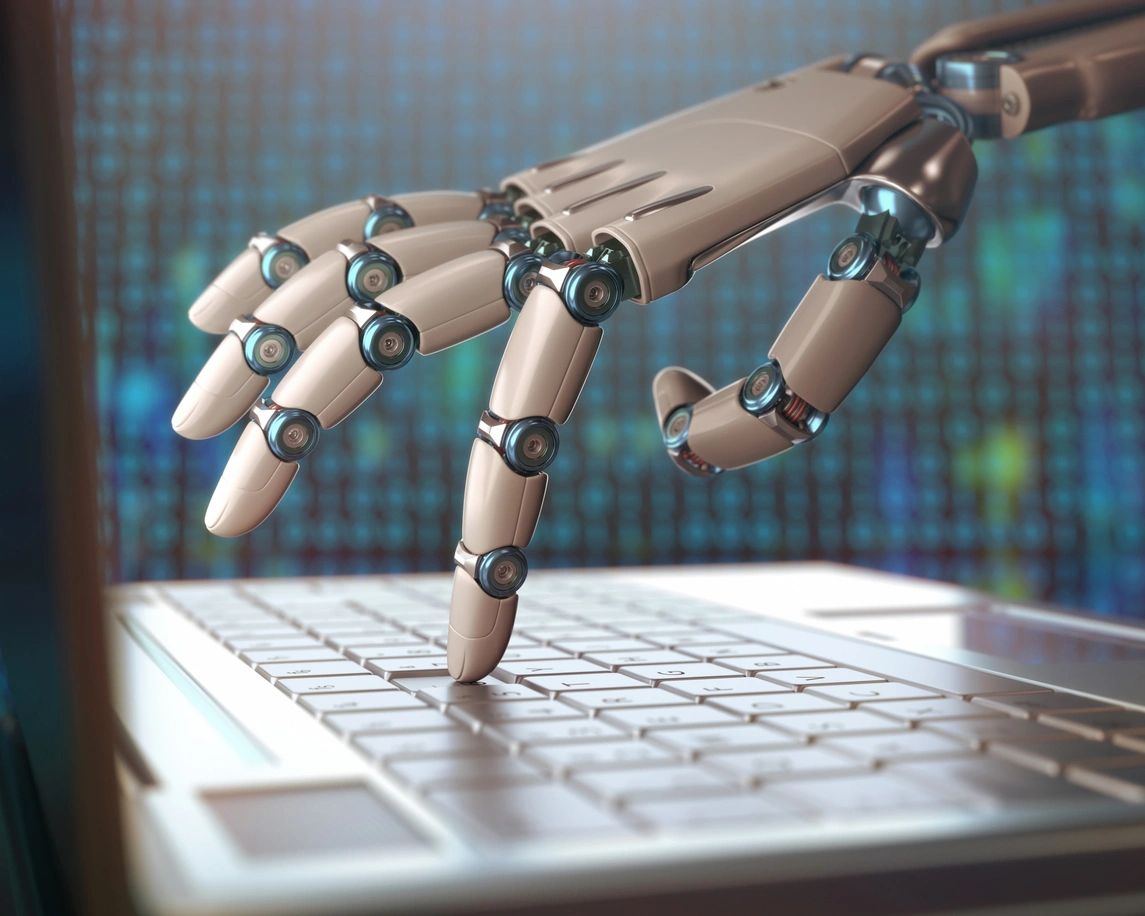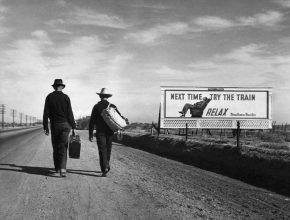(Reprint from 2017 October Issue of the Dead Mule, seems very relevant today)
In 1990, at a public lecture series on art in Los Angeles, three out of five leading urban planners agreed that they hoped someday L.A. would look like the film Blade Runner (1982. Beginning discussions in this essay refer to the original film and not the current Blade Runner 2049 which is discussed later in the essay) It goes without saying that futures of southern cities were not envisioned in the conversation. They often are in public discourse and envisioning of what the future can be. But despite the caesura in future thought concerning the American South, I think films like Blade Runner show places and ways to escape GOP machinations and terror.
In forgotten things, seeds of resistance are allowed to grow. Just ask the replicants left to their own devices on Mars. (In the U.S, the South might just as well be outer space for most Americans.) There is promise inherent in novum of Blade Runner’s tangle of wires, sweat, and skin not only for the South but for the entire movement mobilizing around GOP resistance.
Despite (or perhaps because of) the film’s dystopian world, it gives me as hope as a soon to be inhabitant of the Trump’s America. Science fiction is a way we describe the present, and find ways out of it. I live in the southern GOP stronghold of Mississippi, and I assure you that dystopia and in its science fiction permutations is a perennial southern state of mind.
For us, Dystopia has been here and we’ve been living in it. Just like Deckard, in his world a few shades removed from our own, but still believably in it. In Blade Runner, Deckard’s implicit and belief in his own humanity for mankind and the replicants’ quest for personhood of their own triumph over oligarchic economies that compel them to devour each other like automated machines. Despite Deckard’s destruction of the replicants, they still achieve personhood and agency. What do we learn? When we work together with people capitalism pit against each other instead of hunting each other, we can survive and attain a measure of agency in oligarchic hellscapes at last.
I firmly believe there’s an unlockable cherry pit truth at the heart of Blade Runner, and that knot or lock is what main character Deckard’s heart is made out of of—flesh or ambiguous synthesis. It’s been over ten years and I still can’t puzzle out the history and how’s behind the replicants whether their persecution is an extension of humanity’s tendency to destroy themselves or if its’ an extension of what we make and are made of. But how ironic that I use the metaphor of fruit and cherries, and yet neither exist in the black soot roofs of Deckard’s world. How ironic that in our own land of oil rigs and swamped farmland that fruit can exist. The South and its oil spills, its busted infrastructure, and broken down lights oddly mirror the dark city streets of Blade Runner, and Alabama can seem just as lonely as Deckard’s Los Angeles.
In a place that could create so much renewable power, we’re stuck using candles and coal. The brightest candle burns twice as short. But it burns bright. A lot of the times here in the South, I feel like a lantern, not even a candle, something enclosed and burning off our ancient ideas and things existing long before we could dream of machines. I feel like as the south grinds you down here, and you can become just grey and where the fire goes out. Blade Runner is so dark, drearily set in a world without sunlight. All my favorite movies from the 80’s and 90’s share that lack and love of a world without light. It’s such a dirty movie, set in a dirty Asian lost city. In the future, we do not and cannot dream of America. In the South, America is frozen in time. What does that say about us?
Blade Runner is originally based on Phillip K. Dick’s novel Do Androids Dream of Electric Sheep?, another great American work that profoundly disturbs me more than Blade Runner does. In particular, I recoil of disgust and horror at the death of the synthetic replicant sheep in the book, the way helpless animals and helpless humans are discarded. One of the cherry pits, tiny basic facts in Blade Runner is that we make (gleefully) people disposable; we create people to be the labor or the sum of our things. Dick’s novel as opposed to the movie deals so more directly with poor people, the scraping lives they lead, and the way capitalism creates simulacra that crushes them.
Blade Runner the movie and Blade Runner the visual spectacle is smoky veils, broken mirrors that guide your eyes on handsome Deckard and not the people fleeing in the background. The movie builds itself up on the humans that have to live in the periphery, while subtly through every rotten window and door showing you the way poverty and replication makes people humans, and humans products created in reaction to life.
Is Deckard a replicant? Does he dream of electronic sheep? What happened to our lives that this city is supposed to be Los Angeles, and is there a way we can walk faster or slower to whatever lays there? What is Deckard if he is a replicant that can only live four years? What if he does not spend those four years alone? Deckard and Rachel live such a fragile, hunted life and I’m still trying to figure out how to bring their desire to live without their fear in my own life. If I could go back in time and re-write the music to Blade Runner, I’d make it classic rock. I’d try to make more memories, bring in some light.
But I can’t. I can only listen to the soundtrack now and think about the foreign cities and skylines in my own life, wonder where home is headed and wonder how we detect if we’re human in situations we weren’t meant to survive. In Blade Runner, the future does not recognize the positive or utopian aspects but instead what it views as the unintended, unstoppable by products of late capitalism. And so I’ve been obsessed with the modes of Blade Runner. Blade Runner as praxis. Blade Runner as a way to understand Mississippi, with its broken capitalist dreams slowly performing autophagy. Blade Runner can be taught through Mississippi and Mississippi through Blade Runner in the way some MS citizens are made real and others are constructed to be unreal without hopes of ever passing into validity, the way we create citizens of this state to be tools for white upper class lives– the prison wardens, the labor camps, the sex slaves, and here all in one state founded in 1817.
That’s 202 years before Blade Runner. What will be 202 years after? These questions leave me wondering how much of science fiction is just that, fiction, and how much is it is a gentle or harsher way to tell us the truth about the way we’ve been creating, how we’ve been existing. Blade Runner as praxis— Phillip K Dick would like that.
What’s good about Blade Runner is the way the static is open-ended. In the haze and smog of the city, you can see just about anything. The other day, my favorite author asked me what I loved most to write about. I said life when it’s interspersed by explanation, scientific fact. I now know I didn’t mean exactly that. I meant life when it butts heads angrily, exhaustedly with what we’ve built. I love most writing works that explain just that, works that explain why the school to prison pipeline is the way it is, works that explain why Blade Runner couldn’t come out of just any culture, it had to come from our specific space. I’ve been trying to explain why I love Blade Runner in just about any way anyone will listen.
The southern values that allow marginalized people to survive authoritative regimes in the south are ( and are not the racist kind your Uncle Jim has) inherent in dystopian works like Blade Runner, The Road, and Butler’s Kindred include familial love, grit , and dreams of an equitable world. I don’t know why in popular culture we keep creating science fiction that doesn’t truly look like ourselves, it just looks like white guys. I know why in popular culture we keep creating science fiction that doesn’t truly look like ourselves, it just looks like white guys.
I don’t know why in Blade Runner 2049 two white men are the leads again. I guess for Deckard to come back, he couldn’t have been a replicant. He mattered to the story. He matters to the “who can be real” story. But so did Rachel. It’s the eve of the modern age’s second coming and we still can’t create work that will look like the rest of our lives. A lot of the time I dwell on how works can example what happened to myself and my family in the south when we were children. Now that I’m older, I’m more interested in how I can convince and show children I teach how science fiction matters in their daily life. For myself, it’s Blade Runner. Whoever creates the next work that matters will have to be a kid of electronic dreams. And for that we need to teach our kids about science fiction.
That’s a southern reading of science fiction, at the end of the day: reading a film text to note where grit and guts create success and garner instances of productive fellowship against the capitalist concepts and authoritative regimes. You best believe if Deckard and Roy Batty can reconcile, and Luke Skywalker can defeat Darth Vader with the help of grit and compassion, then surely the South and maybe all of America can survive the next four years. (But then again, the south always survives anything its traditionally white male Republican government throws at it.) But to do so we must dream and create with film worlds that look different, feel different, create different, and still hold counter capitalist ideals of sharing, love, and generational connectivity. So in short: we have to create science fiction that can read like a southern folk song.
With science fiction, we southerns can present ways to each other escape our systematic problems by resistance to oppressive leadership. I mean, have you heard of Octavia Butler? If science fiction is the act of looking ahead, a southern view of science fiction is the act of looking ahead while being forgotten. We’re used to being forgotten, but in the humid ferment we can more freely create interpretation of texts unique to ourselves. For example: Southern states voted overwhelmingly for Trump and the GOP and yet are the poorest states that depend on welfare and would benefit most from a democratic platform.
For example: A southern view of science fiction is reinventing and reinterpreting your surroundings for a more preferred way of life. I’m just saying if Deckard can ignore that he might be a replicant in favor of his preferred reality then maybe there’s something to be said for the southern inclination to cling to different interpretations than what reality presents. Isn’t that the crux of good science fiction, the ability to see differences and might be’s in the face of crushing reality? We can harness that mindset like the replicants did in Blade Runner to believe we’re really human, that we deserve better, and we’ll break out of any jail and face all our makers just to achieve.
Science fiction is the act of describing the world through describing it a hair different. Resistance is the act of fighting for hair breadths of change until you heal the world. To do so in the South means resisting by insisting and believing the world can be and has already been different. We can blend the two mind-sets to do something really different, and take down GOP machinations that crush our life with honest dialogue and love, just like Roy and Deckard.
In often stubborn Southerness, we find the innovation of science fiction is to entirely re-invent the world, and so we can take a lesson from the often myopic southern interpretation of history, dwell in the “what ifs” of history going differently It just takes steadfast love for each other, and our generations. It takes knowing all the bad things in Southern culture, and using that knowledge to make sure our science fiction worlds don’t take us there. It takes looking at all of our bad to find the few small shining examples of the good. The South is ugly. The process of birthing worlds is ugly. The South is the real hell’s kitchen, the star nursey, the start and end of the world. In short: It’s all the real juicy parts of science fiction.
Time moves slowly in the South. That’s the best novum you can get.







